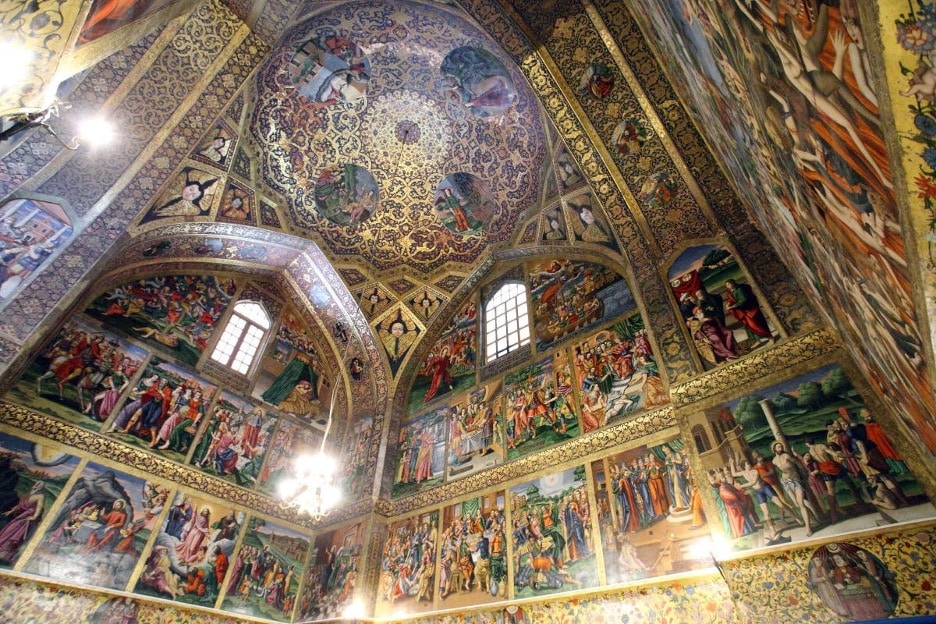
The Early Church in Iran
Christianity is not new to Iran! There are 2,000 years of Christian history where many have invested much to see the gospel advance in Iran. Here is a brief glimpse of all that has been sown in the beautiful land of Iran.
2nd to 7th Centuries: The Spread of Christianity
Despite some vicious opposition, there was a rapid spread of Christianity across Zoroastrian Iran. This was enhanced by Silk Road links and freer worship than in the pre-Christian Roman Empire. Syriac (the empire’s lingua franca) became the language of the Eastern church and it enabled the gospel to be easily spread to towns and villages across the region. Persecution grew after Emperor Constantine’s declaration of a Christian Roman Empire, as Christians were identified with Parthia’s enemy, Rome. Despite this and other challenges, there was no significant move from Christianity.
There was significant persecution, but the church did not break and for 200 years of this period Christianity became part of Iran’s establishment.
During this time the Eastern Church broke from the West to follow Nestorius’ teaching, Iranian Christians carried the Gospel to Yemen, India and Sri Lanka, and along the Silk Road to China. The Iranian church was wholly ‘missionary minded’ (David Bosch).
7th to 13th Centuries: Survival Under Islamic Rule
The church learned how to survive after the Arab Muslims invaded in 637AD. They did not attack Christians as they were seen as ‘people of the Book’ and they knew they needed them to administer the empire. The concept of Dhimmi was adopted, which defined Christians as a subject group, but this was not dissimilar to their treatment by the Zoroastrians.
In this time the Patriarch of the Nestorian Church oversaw about 12 million believers, nearly a quarter of all Christians at that time.
13th and 14th Centuries: Mongol Invasion and Destruction
While Genghis Khan’s invasion was responsible for the destruction of many cities in Northern Iran, one of his Mongol tribes, the Keraits, had been reached by Nestorian evangelists. Christianity had a surprising impact on the Mongol emperors’ families. The Mongols were not initially Muslim, so that there were even negotiations with the Christian West to ally against the Muslim Middle East; but the West did not respond.
The 14th Century was a time of destruction where Tamerlane attacked all peoples, Christian and Muslim. Hundreds of thousands perished under his onslaught. It took until the mid-20th Century to recover the population numbers from before this invasion.
The impact was catastrophic for the Nestorian church which had borne witness to Christ in Iran for over 1,000 years; Tamerlane effectively destroyed the church – but its witness did not die out completely.
Get our newsletter
Stay up to date with what God is doing in Iran today! Get the latest prayer points, project advancements, and opportunities to get involved.
15th to 19th Centuries: Rise of Shi’a Nationalism
The rise of Iranian Shi’a political and religious nationalism under the Safavid dynasty under Ismail (from 1510) was intended to provide a unifying central power against invaders.
The Nestorian church survivors, now known as the Assyrian church, were a small and traumatized minority which slowly regrouped in northwest Iran. Persian-speaking, but with Syriac language, the Safavids saw them as not being fully fledged Iranians; they were to be an ethnic minority.
Armenians came when Shah Abbas (later 16th Century) deported numbers to resettle from Ottoman areas into Iran. By the end of the 19th Century, 100,000 Armenians, bringing their Orthodox traditions, had settled in 12 Iranian cities.
Roman Catholic missionaries had brief contacts with Iran in the 13th Century, and then in the 16th and 17th Centuries.
The photo in the header above, shows the Interior of Vank Cathedral, a 17th Century Armenian church in Isfahan, Iran. Photo courtesy of Creative Commons.
19th Century: Missionary Expansion
Assyrians and Armenians were the main Christian presence until the 1979 revolution. Henry Martyn arrived in Iran in 1811 to complete his Persian New Testament translation. Dr William Glenn completed and printed the Bible in 1847. Missionaries came from the USA, Justin Perkins and his wife, joined by Dr Grant, and they inspired others so that nine organizations were in Iran by the end of the 19th century.
Missionaries conflicted theologically with local Nestorian churches, leading to the emergence of the Presbyterian Church of Iran which grew to 6,000 members in 25 congregations (predominantly Assyrians and Armenians). Anglicans were the other main presence, with Robert Bruce from the Church Missionary Society impacting Isfahan in 1870 with his response to its famine needs.
Both groups also made significant social impact in the provision of hospitals and schools.
We praise God for all that has been invested in Iran by godly men and women from all over the world – brothers and sisters with a heart to see the Iranian people know the saving love of Christ in their lives. Pray with us for a new influx of brothers and sisters from the West and further East to catch God’s heart for Iran and help us gather this incredible harvest of Iranians hungry for the Truth.

Donate Today
